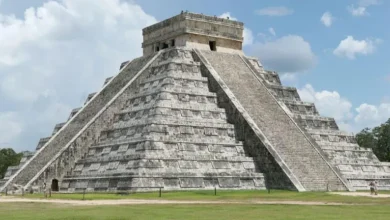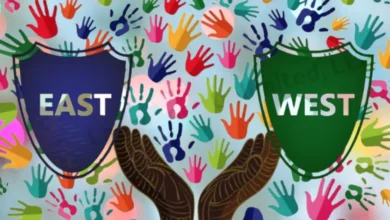Imagine a night where the streets glow with thousands of candles 🕯️, the air is filled with the sweet scent of marigold flowers and delicious pan de muerto, and families gather in cemeteries not to mourn, but to celebrate with music 🎶, food, and laughter. This isn’t a dream—this is Día de Muertos, or the Day of the Dead, one of Mexico’s most colorful, profound, and beautiful traditions.
Far from being a “Mexican Halloween,” the Day of the Dead is a unique celebration that honors the lives of loved ones who have passed away. It is not a day of sadness, but a joyous festival that celebrates memory and the spiritual journey of souls. Get ready to discover a tradition that will capture your heart. ❤️
What Exactly is the Day of the Dead? 🤔
Día de Muertos is a holiday celebrated primarily on November 1st and 2nd. It blends the pre-Hispanic traditions of Mexico’s indigenous peoples (like the Aztecs) with the Catholic beliefs of All Saints’ Day and All Souls’ Day.
The core belief is that during these special days, the souls of the deceased have permission to temporarily return to the world of the living to reunite with their families. 💖
See also Comparing Traditional Festivals in Asian and European Cultures
Comparing Traditional Festivals in Asian and European Cultures- November 1st: This day is dedicated to the deceased children, known as angelitos (little angels). 👼
- November 2nd: This day is for honoring the adults who have passed away.
The goal for families is to welcome their loved ones with a celebration filled with everything they enjoyed in life. It is an act of love, remembrance, and spiritual connection.
The Ofrenda: A Banquet for the Soul 🌮🍊🍞
The most iconic element of the celebration is undoubtedly the altar de muertos, or ofrenda (offering). It’s not a place of worship, but rather a “welcome station” for souls tired from their long journey. Every single item on the ofrenda has a deep meaning:
- Photographs of the Deceased 📸: The heart of the altar. They serve to remember who is being honored and to help the soul recognize its place.
- Marigolds (Cempasúchil) 🧡: The flower of the dead! It is believed that their vibrant color and strong aroma guide the souls from the land of the dead to their ofrenda. Petals are often plucked and spread to create a path to the altar.
- Candles (Velas) 🕯️: These represent light, faith, and hope. They illuminate the way for the souls so they don’t get lost.
- Water 💧: A glass of water is offered to quench the thirst of the souls after their long journey.
- Favorite Food & Drink 🍲🍺: A true feast! The deceased’s favorite dishes and drinks are laid out: mole, tamales, tequila, mezcal, soda… whatever they loved!
- Pan de Muerto (Bread of the Dead) 🍞: A sweet, fluffy bread decorated with strips of dough that simulate bones and a small ball in the center representing a skull. It’s delicious and an absolute must-have!
- Sugar or Chocolate Skulls (Calaveras) 💀: Sweet skulls with names written on the forehead. They are a playful reminder that death is just a part of life. They aren’t meant to be scary, but to smile at death itself! 😉
- Salt & Copal Incense 🙏: Salt is for purifying the soul, while the smoke from the copal incense is meant to lift prayers to the heavens and ward off evil spirits.
- Personal Items & Toys 🧸⚽: Objects that belonged to the deceased (a hat, a book, tools) are placed on the altar to make them feel at home. If the ofrenda is for a child, their favorite toys are included.

La Catrina: The Elegant Icon of Death 💃💀
You’ve surely seen the iconic image of a female skeleton dressed in an elegant feathered hat. That’s La Calavera Catrina!
Originally created by cartoonist José Guadalupe Posada as a social critique of Mexicans who aspired to be European, she was popularized by muralist Diego Rivera. Today, La Catrina has become the quintessential symbol of the Day of the Dead. She represents the idea that, no matter how rich or poor you are, we are all the same in death. She is a reminder to live life to the fullest, but with unmatched elegance and style. Pure class! ✨
See also Dining Etiquette: A Comparison of Japanese and French Cultures
Dining Etiquette: A Comparison of Japanese and French CulturesCemetery Celebrations: A Party, Not a Funeral 🪦🎉
One of the most moving aspects of Día de Muertos is the visit to the cemeteries. Families spend hours cleaning and decorating the graves of their loved ones with flowers, candles, and ofrendas.
But this is not a somber event. Families sit by the graves, eat, drink, listen to music (sometimes with live mariachi bands! 🎺), and share happy anecdotes and memories of the deceased. It is a true family party, where the living and the dead coexist in an atmosphere of joy and love.
Key Differences from Halloween 🎃👻
Although they fall on the calendar around the same time, they are worlds apart.
| Feature | Day of the Dead 🇲🇽 | Halloween 🇺🇸 |
|---|---|---|
| Origin | Pre-Hispanic & Catholic traditions. | Pagan Celtic festival (Samhain). |
| Focus | Honoring and remembering deceased loved ones. A celebration of life. | Warding off evil spirits. Scares, costumes, and candy. |
| Feeling/Tone | Joy, love, nostalgia, celebration. 🥰 | Fear, mystery, fun, mischief. 짓 |
| Symbols | Smiling skulls, flowers, altars. | Jack-o’-lanterns, ghosts, witches, monsters. |
| Main Activity | Creating ofrendas, visiting cemeteries, family feasts. | Trick-or-treating, costume parties, haunted houses. |
A UNESCO World Heritage You Have to Experience
In 2008, UNESCO recognized the Day of the Dead as an Intangible Cultural Heritage of Humanity, highlighting its importance as a living expression of cultural identity and creativity.
Visiting Mexico during Día de Muertos is a life-changing experience. Seeing the streets of cities like Oaxaca, Pátzcuaro, or Mexico City transformed into a sea of marigolds, with parades of Catrinas and the glow of a thousand candles, is something you will never forget.
The Day of the Dead teaches us a powerful and universal lesson: that love and memory are stronger than death. It invites us to look at death not with fear, but as a natural part of the cycle of life, and to celebrate the bonds that connect us to those who are gone, but who will never, ever be forgotten. 💖✨




